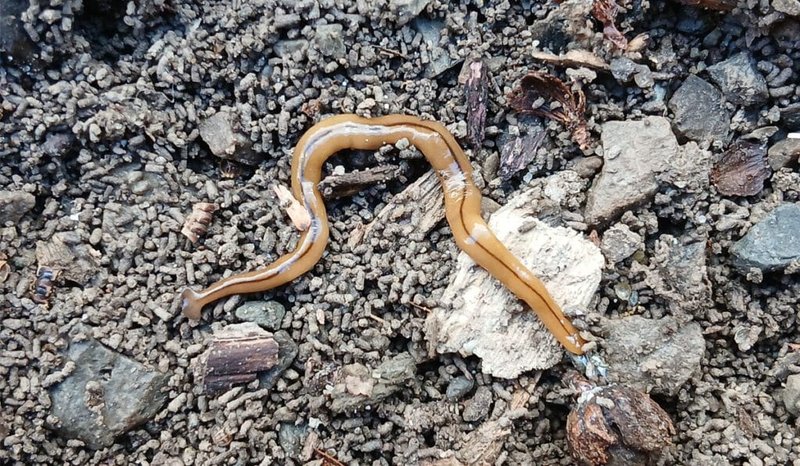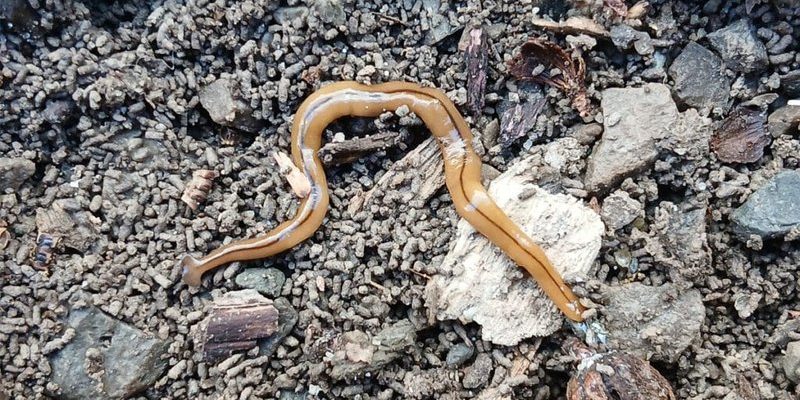
Just like you wouldn’t wear shorts in the snow, hammerhead worms have specific climate conditions that suit them best. Their range is influenced by several factors, including temperature, humidity, and seasonal changes. Each of these elements can either support or hinder their growth, reproduction, and survival. So, grab your favorite drink, and let’s explore how climate shapes the world of hammerhead worms!
What Are Hammerhead Worms?
Before diving into climate, let’s take a moment to understand these intriguing creatures. Hammerhead worms belong to the *Bipalium* genus and are known for their distinctive hammer-shaped heads. They can often be found in warm, moist environments, like gardens or forests. These worms are predatory, feeding primarily on earthworms and other small invertebrates. That’s right; they’re not just slimy; they’re also a bit ruthless!
There are about 15 known species of hammerhead worms, with varying colors and sizes. Some can reach lengths of up to 12 inches! You might think of them as nature’s little hunters, but they also play a role in the ecosystem by controlling the populations of their prey. When we put the climate factor into the mix, we start to see how their presence in an area isn’t random—it’s a delicate balance.
The Warmth of Their Home: Temperature Preferences
One of the most significant factors affecting hammerhead worm ranges is temperature. Hammerhead worms thrive in warm, humid conditions, which is why they’re often spotted in tropical and subtropical areas. Think about it: just like we prefer to lounge on a sunny beach rather than a cold mountain top, these worms are more active in warmer weather.
Typically, they flourish when temperatures are above 15 °C (59 °F). Below this range, they become sluggish and less likely to reproduce. The warmth not only encourages their activity but also extends their growing season. For instance, in regions where winters are mild, these worms can be active all year. But in cooler climates, you might only see them during the summer months.
It’s essential to note that while they love warmth, extreme heat can be detrimental too. Prolonged high temperatures can dry out their habitats, especially if there isn’t enough moisture in the soil. This gives us a clearer picture: hammerhead worms adapt not just to heat, but to moisture levels as well.
Moisture Matters: Humidity and Its Role
Humidity plays a critical role in hammerhead worm habitats. These worms thrive in environments where the soil is consistently moist. They need this moisture not just for hydration, but also for their slimy skin, which helps them move and breathe. Picture it like this: if you’ve ever walked outside on a hot day and felt the sweat trickling down, you know how essential moisture is for comfort!
In drier areas, hammerhead worms struggle to survive. High humidity levels create the perfect playground for them to thrive—think of a refreshing mist on a summer evening. On the flip side, if the air is too dry, you might find them retreating or even dying off.
In regions with seasonal rainfall, you’ll often see hammerhead worms during and shortly after the rainy season when conditions are just right. This seasonal dance with moisture is crucial for their life cycle—allowing them to mate and repopulate when conditions are favorable.
Climate Change: A Shifting Playground
Now, let’s touch on a serious topic: climate change. As global temperatures rise and weather patterns shift, the impact on hammerhead worm ranges can be significant. Changes in temperature and humidity can push these worms out of their traditional habitats.
For example, as certain areas become hotter and drier due to climate change, hammerhead worms may struggle to adapt. They might start moving northward to cooler, more humid regions where they can thrive. Not only does this impact their population but it also affects local ecosystems, where they might not have any natural predators.
Conversely, some regions may become warmer and wetter, allowing for the expansion of hammerhead worm populations. It’s like watching a game of musical chairs, where the suitable spots for these worms keep changing.
Human Influence: Urbanization and Habitat Loss
It’s not just climate change that’s affecting hammerhead worm ranges; human activities play a huge role as well. Urbanization, agriculture, and deforestation can significantly alter their habitats. When we pave over land or clear forests for farming, we strip away the moist environments that hammerhead worms call home.
In cities, the heat can also make conditions more extreme. Urban heat islands can create isolated pockets of warm temperatures, but if these aren’t accompanied by the right moisture levels, hammerhead worms may not thrive. It’s like placing a fish in a tank that’s too dry—no matter how warm it is, it won’t survive.
Here’s the thing: as we continue to impact natural landscapes, we must consider the ripple effects on local wildlife, including these fascinating worms. Protecting natural habitats isn’t just about preserving beauty; it’s about maintaining the balance of our ecosystems.
In the grand scheme of things, climate acts as a vital thread in the complex tapestry of life, influencing how species like hammerhead worms adapt and thrive. Their ranges serve as a marker, telling us not just about the worms themselves, but also about the health of our ecosystems.
As we continue to navigate changes in our climate, it becomes increasingly important to understand these connections. By preserving habitats and reducing our carbon footprints, we can help ensure that hammerhead worms—and other essential species—remain a vibrant part of our natural world. So, the next time you spot one of these peculiar creatures in your garden, remember the delicate balance of climate and life that supports its existence.

